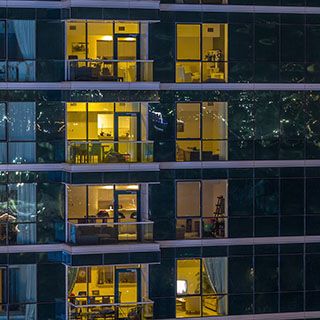The scientific community is still very much finding its way with Covid-19, but despite this, a few studies have been carried out, to give us some insight on how the virus is transmitted when it is airborne.
What is ‘indirect contact’?
Until now, it has been widely thought that Covid-19 is passed from person to person through direct contact, that’s someone you live with or spend at least 15 minutes with. However, there is emerging evidence to suggest that this is not always the case. Some people may have been infected after just a few minutes of exposure, showing just how easily this virus can spread given the right conditions.
Indirect contact in elevators
In China, a cluster of 71 cases was traced back to one building. Genome sequencing of the virus revealed that this particular strain was not in circulation in China. However, a resident of the building had recently returned from the US, where the strain was in circulation. Despite quarantining alone and testing negative twice during her quarantine, further tests revealed she had in fact contracted the virus.
The only contact she had with the first member of the large cluster was in the elevator, for just a few minutes. Which helps to support the theory that, in an enclosed space, even short interactions carry risk.
Indirect contact via the HVAC system
There are a number of concerns surrounding HVAC systems and their ability to spread viral particles. Last week we discussed a study from Australia, that tracked contaminated air as it moved through a hospital HVAC system. And now HVAC’s are under the spotlight again, as the Canadian National Collaborating Centre for Environmental Health has looked at how the virus can spread through a multi-unit residential building, such as an apartment complex.
HVAC’s are designed for comfort not air purification
It is important to remember that the main objective of a HVAC system is comfort, not air quality. In fact, some HVAC systems work by recirculating indoor air, as to continually heat and cool air from outdoors can be expensive or not possible due to the way the system is designed.
Risks associated with HVAC systems
Properly functioning HVAC systems in shared buildings are designed to prevent air moving from one apartment to another. However, this cannot always be guaranteed. If a system is malfunctioning or has been poorly installed, wind, air leakage and warm air rising can all contribute to contaminated air moving through a building unintentionally.
Peace of mind with Austin Air
We still have a long way to go to fully understand the dangers of Covid-19. If you’re concerned about air quality in your home, Austin Air offers peace of mind in uncertain times. Using a combination of Medical Grade HEPA and a unique carbon blend, our units effectively remove a wide range of airborne contaminants, including viruses*, bacteria, chemicals, VOC’s and allergens. Keep the air in your living space clean and safe with Austin Air.
For more info on our range of products, why not visit our SHOP page today.
*Covid-19 is a new strain of virus that as yet, remains untested. However, the Medical Grade HEPA technology used in our filters is proven to remove up to 99% of all airborne contaminants as small as 0.1 microns.
